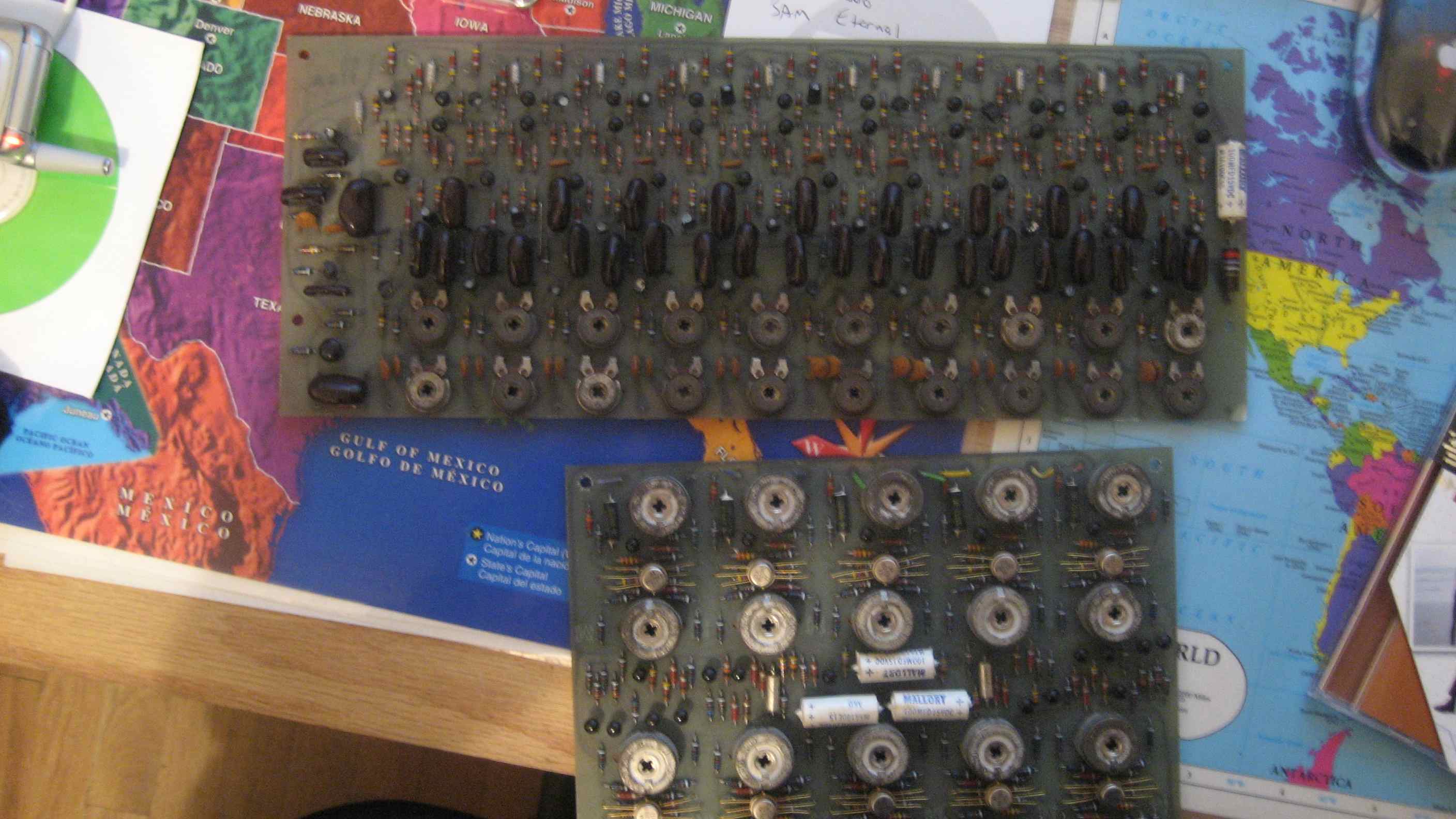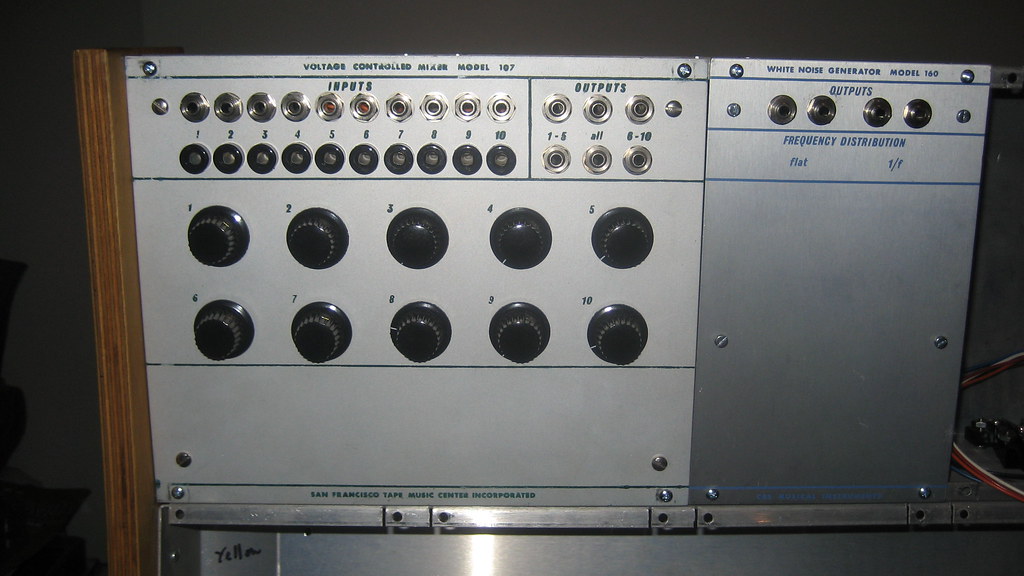Some time in 2007, the idea of "building a better voltage processor" came up between Reed and me. The problem goes like this....
 256
256 pros: good for mixing, inverting and scaling. Huge output voltage swing possible, for black knob era systems where you really need 15 volts to open some parameters.
cons: All it can do is mix and invert. Only 2 sections. No indicators. All black banana jacks. (just kidding Rick)
 257
257pros: able to mix, scale, invert, crossfade, manually offset, VCA
cons: no gain, can only mix 2 CVs. Because it uses PWM for the crossfade, it doesn't like audio rate CVs. Only 2 sections. Confusing nomenclature.
 256e
256epros: able to crossfade. invert, scale, mix (kinda). Breakpoints!
cons: only will work with up to 10 volt CVs. No real mixing.
The first idea was to make a quad voltage processor module that had 2 sections of 256 clone and 2 sections of 257 clone. That seems like a cool enough idea, but then I thought, "what about making a design that can do what both do and including 4 of those?"
The idea is to have the ability to mix 3 CVs, crossfade, scale (from a knob or another CV), offset. It should have an LED to show it's state. I had a design made up and a front panel worked out, then my laptop was stolen by a Gypsy in Barcelona. These print outs are all that remain. Anyway, I am ready to dive back in and I will get something together.

It will be like a 257, but with 2 reversable CV inputs. The PWM crossfader will be made from newer, faster parts. So the cutoff frequency will not be so low. The 257's triangle oscillator, for the PWM, is 21kHz. I think I'll try to take it up to 100kHz or so. This shouldn't be a problem for modern analog switch chips. I think I'll use center detented pots for the reversing CV inputs. Here's the 257 schematic, BTW.

With this configuration, you can mix 3 signals, one with voltage controlled gain. It's not the 4 signals of a 256, but it's close. It can do everything a 257 can do, with a bit more speed. It's 4 processors in one module space. It'll have LEDs on the outputs. the output will not swing a full 15 volts, because I don't want a 24 volt supply line (200e and many 200 systems don't have one). It won't even try to do the breakpoints, we'll leave that to the 256e.












 The second module I have ready to order parts for is the Quad Voltage Processor I wrote about last month. I thought I could get all the parts between the controls on a single PCB, using SMT, but I found that it was more parts than I anticipated. It is a motherboard with all the panel controls and a second board with the actual circuit. Since this is essentially 2 whole 257 modules, each with an extra CV input, I think that is respectable enough. I'm really looking forward to getting this one built up. This will be a boon to small 200 systems, where it will solve many control voltage situations.
The second module I have ready to order parts for is the Quad Voltage Processor I wrote about last month. I thought I could get all the parts between the controls on a single PCB, using SMT, but I found that it was more parts than I anticipated. It is a motherboard with all the panel controls and a second board with the actual circuit. Since this is essentially 2 whole 257 modules, each with an extra CV input, I think that is respectable enough. I'm really looking forward to getting this one built up. This will be a boon to small 200 systems, where it will solve many control voltage situations.

















 256e
256e

















